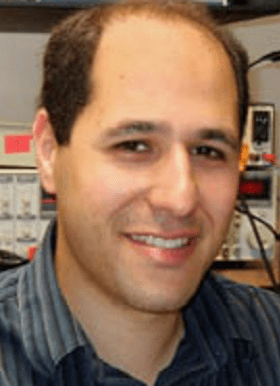
Vitaly Klyachko, PhD
Professor, WashU Cell Biology & Physiology
- Phone: 314-362-5518
- Email: klyachko@nospam.wustl.edu
Understanding the synaptic basis for neural plasticity with the goal of understanding how neural circuits analyze information
Synapses are considered to be the computational units of the brain and synaptic plasticity is believed to underlie many essential brain functions including information processing. Yet, due to inaccessibility of most central synapses to conventional experimental techniques, many basic synaptic mechanisms and their computational significance remain elusive. Research in my laboratory is focused on understanding the mechanisms and regulation of neurotransmitter release at individual synapses. Our second major interest is elucidating the functional roles of presynaptic processes in synaptic plasticity and information processing. We are currently developing three main projects to address these questions by:
- Studing presynaptic release mechanisms and synaptic vesicle cycling at the level of individual synapses. Using cutting edge imaging techniques in combination with advanced image analysis and computational approaches we can simultaneously visualize movements and release of several vesicles inside a synapse. In parallel, we use high-resolution capacitance measurements to detect and study fusion of individual synaptic vesicles at active zones.
- Investigating how presynaptic processes give rise to short-term plasticity and how this plasticity determines information processing by individual synapses and functional circuits. Using natural spike trains recorded in behaving rodents we extend this analysis from individual synapses to the circuit level, and investigate synaptic interactions in basic feed-forward and feed-back circuits.
- Relating deregulation in short-term synaptic plasticity with the impairment of information processing observed in many neurodegenerative diseases, such as Alzheimer`s. We use mouse models of Alzheimer`s disease and a variety of imaging and electrophysiological techniques to analyze how rapid synaptic plasticity at cortical and hippocampal regions is affected by the familiar mutations found in Alzheimer’s.